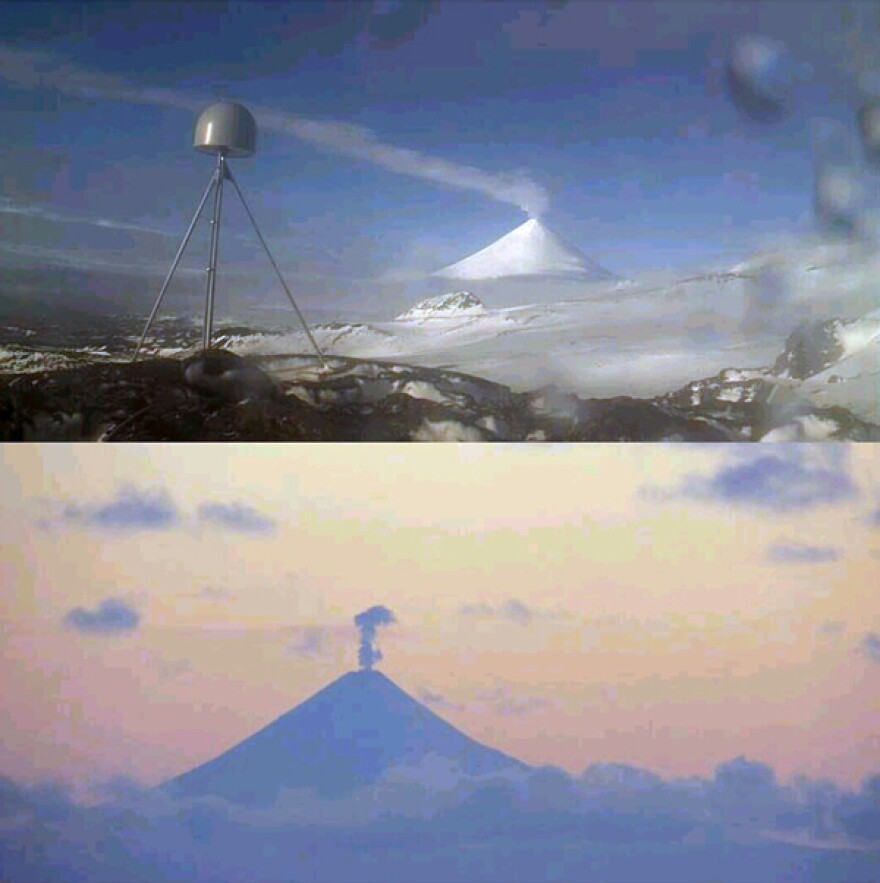If you’ve taken a PenAir flight between Unalaska and Anchorage in the past year, you’ve been traveling over an erupting volcano.
Wednesday marks one year since Shishaldin Volcano woke up on the Alaska Peninsula in January 2014, and didn’t go back to sleep.
Dave Schneider is a geophysicist at the Alaska Volcano Observatory. He says Shishaldin hasn’t appeared to do much over the course of this eruption. That’s because:
"Most of the activity is occurring deep down in the summit crater, which is quite deep -- several hundred yards deep," Schneider says.
That means even when there’s lava in the crater, it takes a lot of energy to force it out. Shishaldin hasn’t been seeing strong tremors, either, and any ash emissions have stayed on the flanks of the summit. That ash is often visible on regional flights between Anchorage and places like Unalaska.
Shishaldin is the highest peak in the Aleutians, and the most symmetrical, conical volcano in the world. It’s also one of the most active in Alaska. In fact, Wednesday marks another Shishaldin anniversary -- of a brief eruption back in 1967. The AVO doesn’t know many details about that event.
And though their monitoring tools have improved a lot since then, Schneider says even the past year at Shishaldin has beenunpredictable:
"It had gone for a number of weeks without any evidence of high temperatures, and then on Thursday, it ramped back up slightly again," he says. "But there’s really no particular hazard at this point. You know, I wouldn’t go up and stand on the rim of it... Well, I’d kind of like to."
But really, Schneider says they’ve only kept the volcano on alert because while it’s restless, it could begin to threaten air travel at any time. The volcano has been known to send ash plumes well into the stratosphere, though it hasn’t done so in many years.
That’s why the AVO’s not breaking out the cake and balloons for Shishaldin’s birthday just yet. Schneider says they’ll wait to celebrate until the eruption ends.

